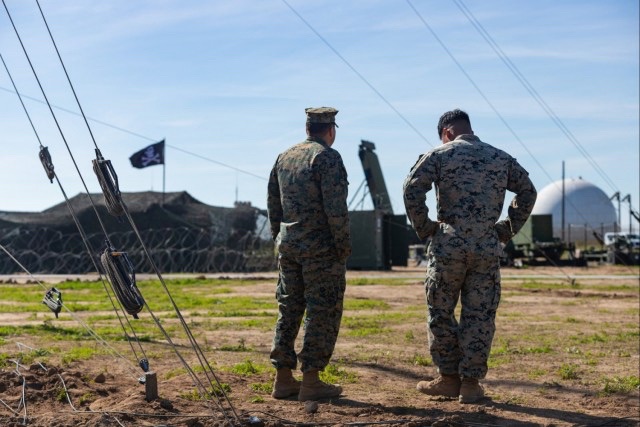CAMP PENDLETON, Calif. — Following months of preparation, the U.S. Army is ready to experiment with groundbreaking conc
epts and cutting-edge technologies at Project Convergence Capstone 4. The experiment will take place during the coming months at locations around the West Coast.

Hosted by Army Futures Command and the U.S. Army, PC-C4 is a joint and multinational event that marks a significant milestone as the largest Project Convergence experiment to date. The experiment aims to impart crucial insights on joint service emerging and transforming technologies, future concepts and future formations. Furthermore, it seeks to enhance collaboration among joint and allied partnerships by facilitating cross-domain military operations and unified strategic approaches.
This iteration of PC-C4 is informed by more than a year of persistent experimentation in locations around the Indo-Pacific and Europe.
“Army Futures Command has initiated the concept of persistent experimentation,” said Douglas Fletcher, chief of staff for the Joint Modernization Command. “It is a continuous campaign, not just in one year, but over multiple years, and then pointed at the future.”

The past year of persistent experimentation took place during various military exercises throughout the Pacific and Europe, and included both real-world scenarios and training missions. These exercises strategically integrated new war-winning capabilities that are now set to play a pivotal role in PC-C4.
The concept of persistent experimentation is the deliberate insertion of future capabilities and prototypes into ongoing training missions, serving as learning opportunities for their integration into operational forces. The objective of this approach is to construct a roadmap of experimental capabilities, refining and enhancing these experiments at each turn.
The continuous experimentation provides invaluable lessons and perspectives, informing future iterations of Project Convergence Capstones and propelling Army transformation toward delivering the Army of 2030 and envisioning the Army of 2040, said U.S. Army Col. Zachary Miller, JMC commander and the PC-C4 deputy director.
“We’ve made some important advances in the past year as we experimented with Joint force and multinational transformation around the globe, including the Philippines, Alaska, Germany and Poland,” Miller said. “But the most important thing we did during those experiments was lay the groundwork for what we want to learn and accomplish at Project Convergence Capstone 4. We are now well prepared to make progress on how we fight in areas like long-range precision fires, integrated air missile defense, cyber, space and human-machine integration.”

In the first Project Convergence Capstone of 2020, participation was limited to the U.S. Army. Subsequent iterations in 2021 and 2022 witnessed a progressive expansion, welcoming multinational allies and Joint forces to the experiment. Now, with PC-C4, this iteration is hosting the largest-ever involvement of multinational allies and partners to date with militaries from the United Kingdom, Australia, Canada, New Zealand, France and Japan.
“As we look to how we will fight in the future, should we be called upon, it will take all the services, and it will take national partners in the theater to help us win,” Fletcher said.
The focal point of the PC-C4 experimentation will revolve around the domains of deep sensing, integrating fires, including offensive capabilities like counter-strike capabilities and contested logistics within a maritime setting.
“The focus of these experiments isn’t necessarily new,” Fletcher said. “But we are able to test them in a much more meaningful way in this environment.”
PC-C4 holds the promise of offering profound insights into the future of warfare and the chance to explore emerging capabilities across air, land, space and maritime components. Furthermore, the outcomes of these experiments serve as essential data for informing adjustments in doctrine, organizational structures, training protocols, leadership development initiatives, material acquisitions and personnel strategies.
By SPC Hunter Grice, 24th Theater Public Affairs Support Element

